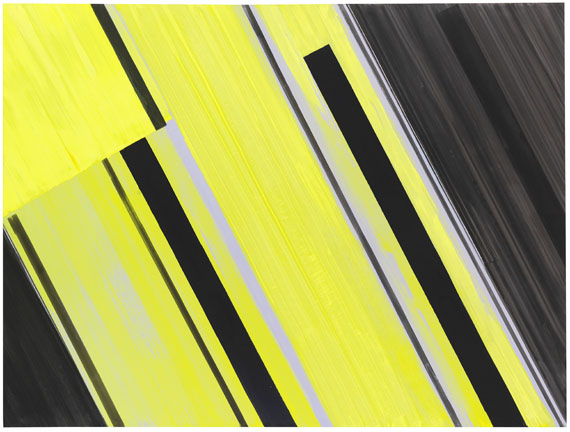Dictionary


Zurich School of Concrete Artists
It is not known exactly when the Zurich School of Concretists came into existence. The exhibition, "Zeitprobleme in der Schweizer Malerei und Plastik" (Problems of our time in Swiss Painting and Sculpture), held in 1936 in Zurich, undoubtedly played a role in the group’s establishment. In the exhibition catalogue, artist Max Bill (1908-1994) articulated the principles of Concrete Art "Concrete design is design which arises from its own means and rules, without deriving or borrowing from external natural phenomenon, and which is based on optical design, in colour, form, space, light, movement".
Max Bill, Camille Graeser (1892-1980) and Richard Paul Lohse (1902-88) were the leading exponents of Zurich Concretism. Their work contained the principles of concrete art, which was a theoretically and aesthetically exemplary visual expression of spiritual thought processes. Thus, the artists executed paintings, which contained strict geometric forms and a rich palate, which were unified in powerful, harmonious compositions. The reference to mathematical systems was a particular characteristic of Richard Paul Louse’s work, used as part of his ordering of colour fields.
All of the aforementioned artists were also members of the Allianz artists group, which emerged from the Zurich Concretist circle.
It is not known exactly when the Zurich School of Concretists came into existence. The exhibition, "Zeitprobleme in der Schweizer Malerei und Plastik" (Problems of our time in Swiss Painting and Sculpture), held in 1936 in Zurich, undoubtedly played a role in the group’s establishment. In the exhibition catalogue, artist Max Bill (1908-1994) articulated the principles of Concrete Art "Concrete design is design which arises from its own means and rules, without deriving or borrowing from external natural phenomenon, and which is based on optical design, in colour, form, space, light, movement".
Max Bill, Camille Graeser (1892-1980) and Richard Paul Lohse (1902-88) were the leading exponents of Zurich Concretism. Their work contained the principles of concrete art, which was a theoretically and aesthetically exemplary visual expression of spiritual thought processes. Thus, the artists executed paintings, which contained strict geometric forms and a rich palate, which were unified in powerful, harmonious compositions. The reference to mathematical systems was a particular characteristic of Richard Paul Louse’s work, used as part of his ordering of colour fields.
All of the aforementioned artists were also members of the Allianz artists group, which emerged from the Zurich Concretist circle.
Offers
Headquarters
Joseph-Wild-Str. 18
81829 Munich
Phone: +49 89 55 244-0
Fax: +49 89 55 244-177
info@kettererkunst.de
Louisa von Saucken / Undine Schleifer
Holstenwall 5
20355 Hamburg
Phone: +49 40 37 49 61-0
Fax: +49 40 37 49 61-66
infohamburg@kettererkunst.de
Dr. Simone Wiechers / Nane Schlage
Fasanenstr. 70
10719 Berlin
Phone: +49 30 88 67 53-63
Fax: +49 30 88 67 56-43
infoberlin@kettererkunst.de
Cordula Lichtenberg
Gertrudenstraße 24-28
50667 Cologne
Phone: +49 221 510 908-15
infokoeln@kettererkunst.de
Hessen
Rhineland-Palatinate
Miriam Heß
Phone: +49 62 21 58 80-038
Fax: +49 62 21 58 80-595
infoheidelberg@kettererkunst.de
We will inform you in time.




